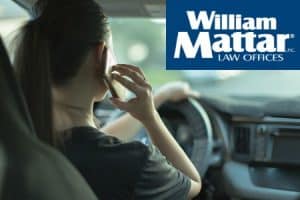What if the Other Driver Was on a Cell Phone at the Time of the Car Accident?
 In the year 2020, cell phone use is pervasive. Our phones now have hardware similar or superior to the big machines that sat on our desks just a couple years ago, and they fit neatly into our pockets. Home screens populate with dozens of applications, from Facebook to Instagram to Google Maps. Unfortunately, sometimes these phones make their way into the hands of motorists as they travel on public roadways, which can lead to a distracted driving accident.
In the year 2020, cell phone use is pervasive. Our phones now have hardware similar or superior to the big machines that sat on our desks just a couple years ago, and they fit neatly into our pockets. Home screens populate with dozens of applications, from Facebook to Instagram to Google Maps. Unfortunately, sometimes these phones make their way into the hands of motorists as they travel on public roadways, which can lead to a distracted driving accident.
When motorists become distracted, those around them are placed in needless danger. If you are involved in a car accident and believe the other driver was on his or her cell phone before or at the time of the collision, this can help you establish fault. Here are some things to consider:
Vehicle and Traffic Law 1225(d)
The New York Vehicle and Traffic Law provides that “no person shall operate a motor vehicle while using any portable electronic device while such vehicle is in motion.” According to that provision, the term “portable electronic device” is defined broadly to include: “personal digital assistant (PDA), handheld device with mobile data access, laptop computer, pager, broadband personal communication device, two-way messaging device, electronic game, or portable computing device, or any other electronic device when used to input, write, send, receive, or read text for present or future communication.”
Use of a cell phone while operating a motor vehicle violates the Vehicle and Traffic Law. New York courts hold that violation of the Vehicle and Traffic Law can constitute negligence per se, meaning that the act, in and of itself, can establish fault if the violation resulted in the collision and your injuries.
Establishing Cell Phone Use
In order to invoke Vehicle and Traffic Law 1225(d), you will need to demonstrate in a court of law that the other motorist was using a cell phone before or at the time of the accident.
This is not always so easy. If you have firsthand knowledge of the other motorist using a cell phone, that should suffice. For example, if you looked in the rear-view mirror before impact and saw the other motorist looking at the screen of a cell phone rather than the road ahead, you will have a strong claim of negligence per se. If, however, your only claim of cell phone use is the accident itself, you may not have a very strong claim.
Informal vs. Formal Discovery
If you do not have firsthand knowledge of the motorist using a cell phone at the time of the collision, you will have to resort to discovery. There are two kinds of discovery: informal and formal, and an attorney can help you with both.
Informal discovery includes any post-crash investigations, including a search for nearby surveillance footage and the identities of potential witnesses. Surveillance footage may reveal cell phone use, and witnesses may have had a unique vantage point that allowed them to see unlawful cell phone use.
Formal discovery requires some court proceedings, and perhaps the most powerful discovery tool is the examination before trial, also known as a deposition.
During a deposition, the motorist, and perhaps any passengers, will have to answer questions under oath. If, after the deposition, there is a factual basis to believe the motorist was on a cell phone at the time of the accident you may be able to gain access to cell phone records, which could help demonstrate cell phone use at the time of the accident.
Injured In A Distracted Driving Accident? Call William Mattar.
The injury lawyers at William Mattar law offices know what it takes to prove that a motorist was on a cell phone at the time of the car crash. Discovery is time-sensitive. The longer you wait, the more difficult it can be to prove cell phone use. Call our car accident attorneys anytime for a free consultation, 844-444-444.

















